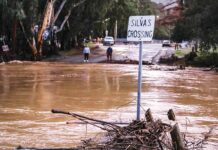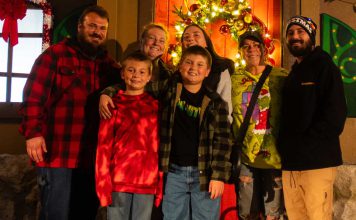On Election Day, make sure you closely watch the outcome of San
Jose’s mayoral race between Chuck Reed and Cindy Chavez.
On Election Day, make sure you closely watch the outcome of San Jose’s mayoral race between Chuck Reed and Cindy Chavez. A lot’s riding on it for South Valley.
A San Jose Mercury News poll released Thursday shows Reed well ahead of Chavez at 47 percent to 35 percent. Whoever might win this Tuesday, I believe this race is significant for South Valley residents because big ol’ San Jose has a powerful gravity on South Bay politics.
America’s 10th largest city can’t help but shape the society and politics of Hollister, San Juan Bautista, Gilroy, San Martin and Morgan Hill where so many of its workers live. But the No. 1 reason the selection of San Jose’s next mayor is important to us can be put into two words: Coyote Valley. The future of this pristine agricultural terrain separating Silicon Valley from South Valley will be greatly influenced by San Jose’s next mayor.
If the developers’ dreams come true, Coyote Valley’s rolling hills and farmland might one day be paved over for business and homes for more than 70,000 people. That massive new community can’t help but impact our lives here in the South Valley. More traffic congestion as well as increased air and water pollution are just a few things we’ll get in this bad bargain.
To get some perspective on the real issue of Coyote Valley, we need to understand the history of how it got into San Jose’s hands. Perhaps you’ve noticed while traveling north on Hwy. 101 the sign for San Jose’s city limits soon after you pass Cochrane Road in Morgan Hill. It’s a bit bizarre that at that location, there’s no “city” around but simply rolling hills, a golf course and family farms. You might think the sign was misplaced, but San Jose’s city limits do indeed extend this far south.
The reason why begins in 1950 when San Jose was a city of 95,000 people on 17 square miles of land. That year, Anthony “Dutch” Hamann was hired as city manager. During Hamann’s 19-year reign, San Jose underwent the most massive alteration in its civic history.
San Jose’s city leaders saw the influx of new residents moving here after World War II and dreamed of transforming their one-time farm town into one of the nation’s biggest metropolises. Civic leaders boasted how San Jose would one day rival a certain sprawling city in Southern California. As unpalatable as it sounds today, San Jose’s business and government leaders proudly proclaimed they intended to make their city “the Los Angeles of the north.”
To achieve this goal, the city needed to expand its territory into the surrounding fields and orchards. That’s how the infamous “Annexation Wars” began. So ruthless was Hamann’s staff in taking over farmland that they were derided as San Jose’s “Panzer Division,” a comparison to Adolf Hitler’s invading soldiers. Ultimately, by the end of the 1960s, San Jose’s boundaries reached north to the San Francisco Bay and stretched south into the rural terrain of Coyote Valley.
In 1999, Internet hardware company Cisco Systems, riding the dot-com boom, announced it wanted to build a massive 20,000-worker campus in Coyote Valley. Environmental groups and open space advocates opposed this proposal. Luckily, with the dot-com bust Cisco backed out.
Nonetheless, Mayor Ron Gonzales decided to muddle on with a massive housing development. He conceived an ultra-modern community for the 21st century.
Gonzales, however, had a major character flaw – arrogance. His blow-hard style shut off any real discussion that the impact a sprawling Coyote Valley community might have on the whole South Bay region. Gonzales refused to really answer the tough questions South Valley folks asked on how his proposed development would impact their lives.
Hopefully, San Jose’s next mayor – either Cindy Chavez or Chuck Reed – will be much more neighborly to us. Hopefully, the winner will recognize that urban development of Coyote Valley is a regional issue important for South Valley residents.
This week, I contacted the offices of the two candidates to see how willing they were to reverse the damage Ron Gonzales did. I wanted to see if either candidate is willing to have open and honest dialogue about San Jose’s relationship with South Valley.
Reed promptly returned my call. He explained to me he takes a “cautious view” on Coyote Valley. He’ll only support development if it provides a proven and positive benefit to the entire South Bay region. “I think the next mayor has to be more engaged with all the surrounding towns and cities,” he added.
Despite several phone calls and an e-mail, Chavez and her staff failed to respond to my request to see how open she is to discussing the Coyote Valley question with South Valley locals. I hope this isn’t a bad sign that, if elected, she’ll be like Gonzales and simply snub us. I also hope the $95,000 Chavez has received from housing development businesses isn’t another bad sign. No doubt they’re hoping their generous campaign donations might swing her to approve development in Coyote Valley.
Morgan Hill mayoral candidates Dennis Delisle and Steve Tate both stressed the importance of creating better South Valley relations with San Jose’s next mayor. “Hopefully, we’ll have a good working relationship with them,” Delisle said. “We have to keep the channels of communication open.”
Tate promised to be proactive in inviting either Reed or Chavez – whoever wins on Tuesday – to a friendly mayor-to-mayor chat open to the public. “If I get elected, I’ll do the outreach in the first week,” Tate said. “They’re new, I’m new. Let’s get a cup of coffee and get to know each other.”
Like Delisle and Tate, I encourage the next mayor of San Jose to get to know us here in the South Valley region. There’s a lot of important stuff we really need to discuss … as next-door neighbors.












